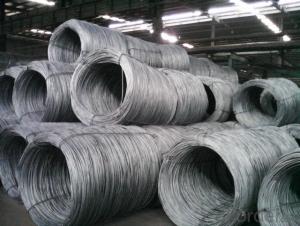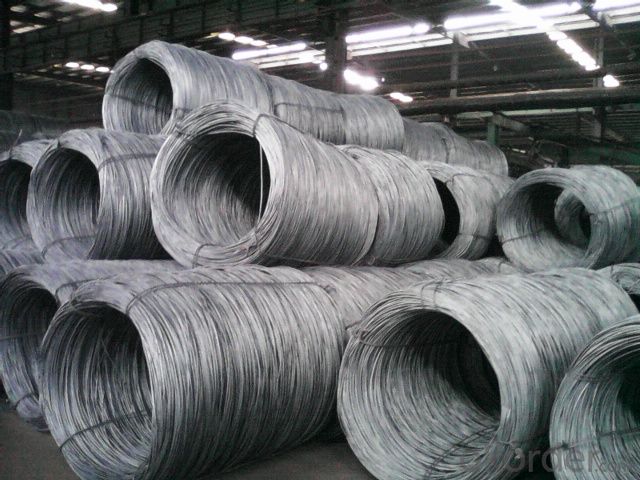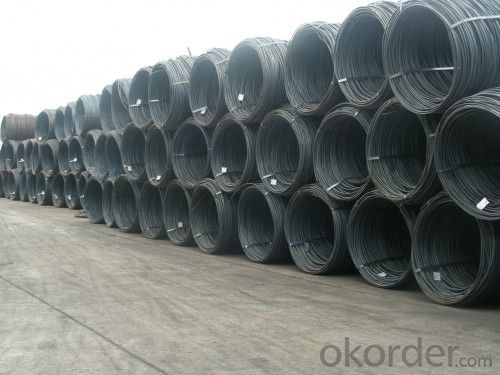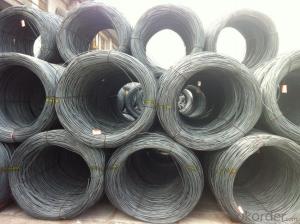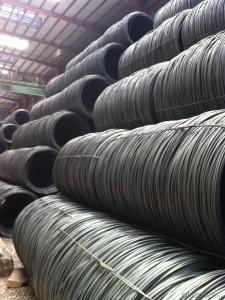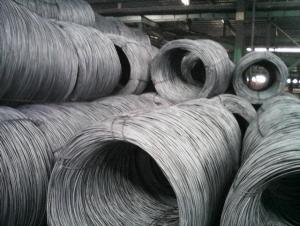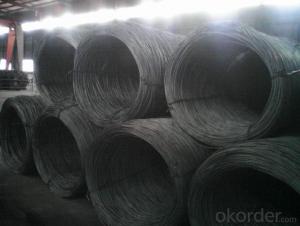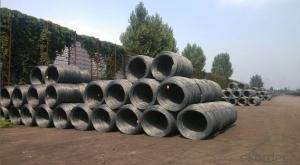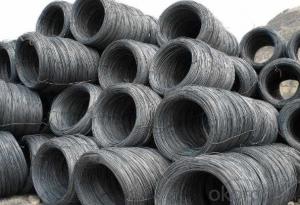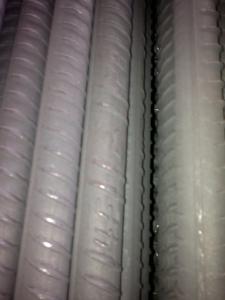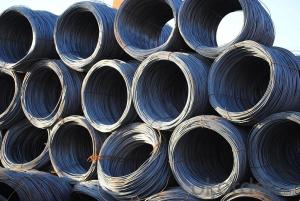Steel Wire Rods Hot Rolled in Low Carbon
- Loading Port:
- China main port
- Payment Terms:
- TT OR LC
- Min Order Qty:
- 100 m.t.
- Supply Capability:
- 10000 m.t./month
OKorder Service Pledge
OKorder Financial Service
You Might Also Like
Product Description:
OKorder is offering Steel Wire Rods Hot Rolled in Low Carbon at great prices with worldwide shipping. Our supplier is a world-class manufacturer of steel, with our products utilized the world over. OKorder annually supplies products to African, South American and Asian markets. We provide quotations within 24 hours of receiving an inquiry and guarantee competitive prices.
Product Applications:
Steel Wire Rods Hot Rolled in Low Carbon are ideal for structural applications and are widely used in construction and manufacturing. Carbon steel wire rod is mainly used for reinforcement of reinforced concrete and welded structure or reprocessed (roberts , nail, etc.) materials, especially used to produce wire drawing, welding electrode, nails, spring, electronic, precise machinery parts and so on.
Product Advantages:
OKorder's Steel Wire Rods Hot Rolled in Low Carbon are durable, strong, and wide variety of sizes.
Main Product Features:
· Premium quality
· Prompt delivery & seaworthy packing (30 days after receiving deposit)
· Can be recycled and reused
· Mill test certification
· Professional Service
· Competitive pricing
Product Specifications:
Steel Grade: SAE1006-1018B
Standard: ASTM, GB
Diameter: 5.5mm, 6.5mm, 7mm,8mm,9mm,10mm,12mm,14mm
Type: in coil, coil weight around 2MT
Alloy or Not: Alloy
Technique: Hot Rolled
Place of Origin: China Mainland
Surface: round, no twisted, light and smooth
Grade | Chemical Composition(%) | |||||
C | Mn | Si | S | P | B | |
SAE1006B | 0.03~O.07 | ≤0.32 | ≤0.30 | ≤0.045 | ≤0.040 | >0.0008 |
Mechanical properties | ||||||
Yield strength(N/mm2) | Tensile strength(N/mm2) | Elongation(%) | ||||
250-280 | 350-380 | ≥32 | ||||
Grade | Chemical Composition(%) | |||||
C | Mn | Si | S | P | B | |
SAE1008B | 0.10max | 0.3~O.50 | 0.15max | 0.050max | 0.040 max | 0.0008 min |
Mechanical properties | ||||||
Yield strength(N/mm2) | Tensile strength(N/mm2) | Elongation(%) | ||||
≥195 | 315-430 | ≥30 | ||||
FAQ:
Q1: How many tons of steel products could be loaded in containers?
A1: Usually the steel products are delivered by bulk vessel because of the large quantity and the freight. However, there are no bulk vessel enter some seaports so that we have to deliver the cargo by containers. The 6m steel product can be loaded in 20FT container, but the quantity is changed according to the size, usually from 18tons to 25tons.
Q2: How do we guarantee the quality of our products?
A2: We have established an advanced quality management system which conducts strict quality tests at every step, from raw materials to the final product. At the same time, we provide extensive follow-up service assurances as required.
Q3: How soon can we receive the product after purchase?
A3: Within three days of placing an order, we will arrange production. The normal sizes with the normal grade can be produced within one month. The specific shipping date is dependent upon international and government factors, the delivery to international main port about 45-60days.
Images:
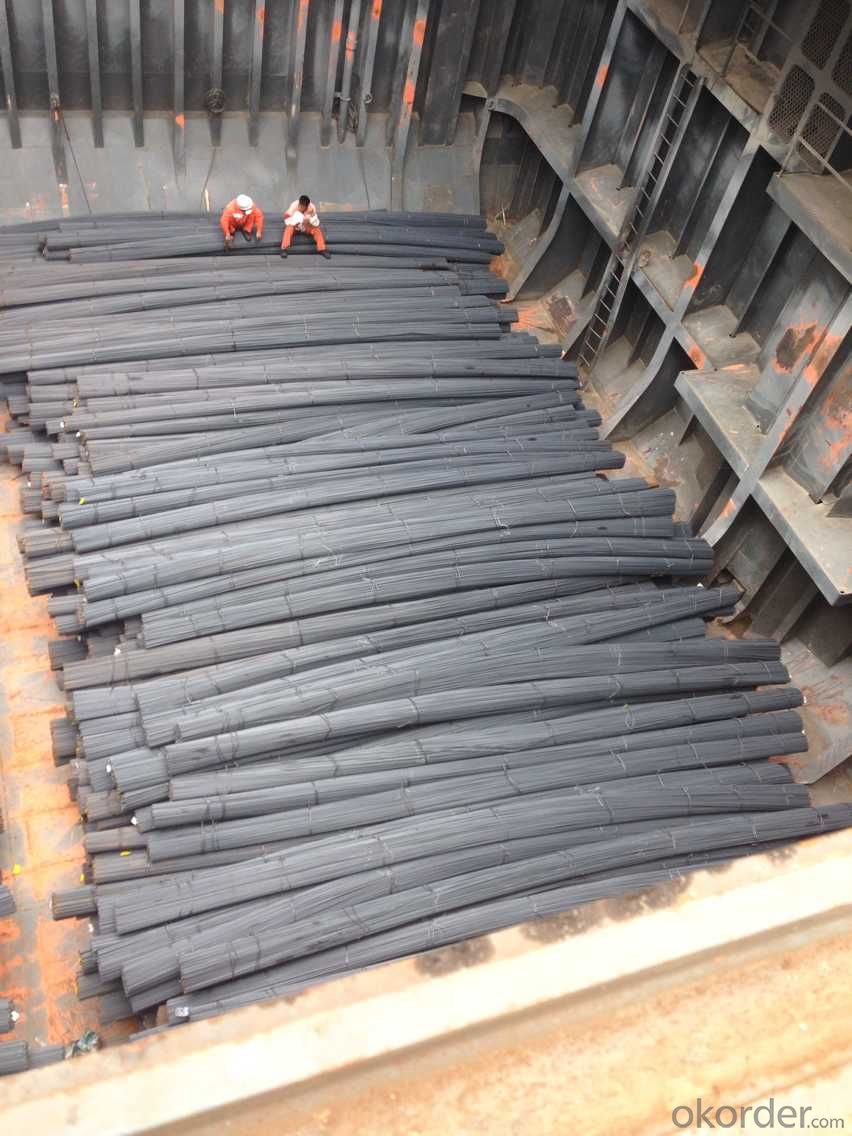
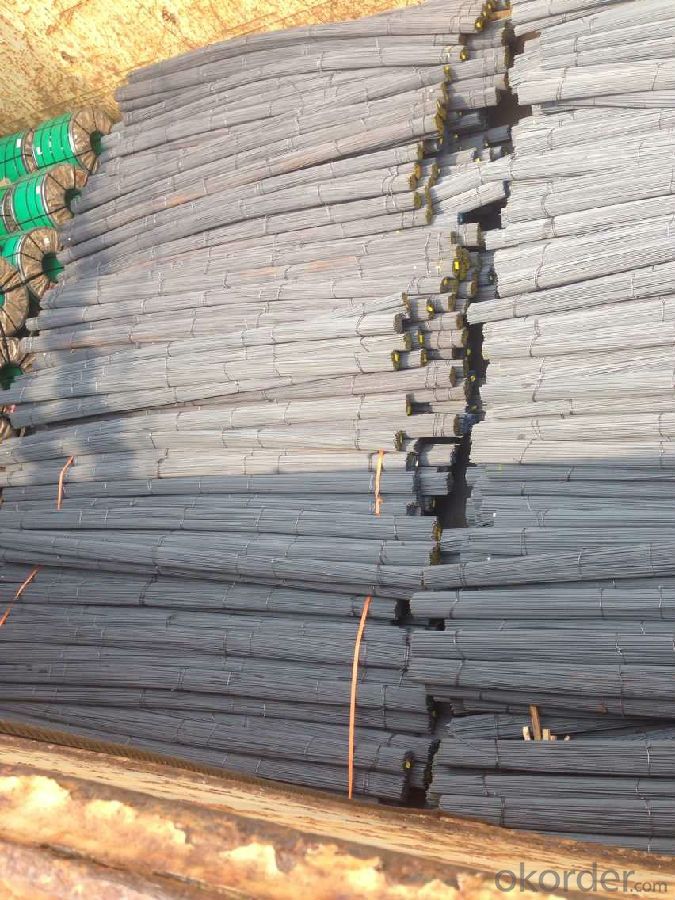
- Q: How is steel wire rod used in the production of wire for wire rope slings?
- Steel wire rod is used in the production of wire for wire rope slings by being first drawn through a series of dies to reduce its diameter and increase its length. This process, known as wire drawing, helps to enhance the tensile strength and flexibility of the wire. The resulting wire is then twisted and braided together to form the strands of the wire rope sling, providing it with the necessary strength and durability for lifting heavy loads safely and reliably.
- Q: How is steel wire rod used in the oil and gas industry?
- Steel wire rod is commonly used in the oil and gas industry for various applications. It is primarily used for the manufacturing of wirelines, which are used to lower downhole tools and equipment into oil and gas wells. Wirelines made from steel wire rod are strong, durable, and resistant to corrosion, making them ideal for withstanding the harsh conditions found in oil and gas wells. Additionally, steel wire rod is also used for reinforcing and strengthening concrete structures in oil and gas facilities, such as pipelines, tanks, and platforms, to ensure their structural integrity and longevity.
- Q: How is surface quality assessed for steel wire rod?
- Surface quality for steel wire rod is assessed through visual inspection and various testing methods. This includes examining the wire rod for any surface defects such as cracks, pits, scratches, or irregularities. Additionally, non-destructive testing methods like ultrasonic testing and magnetic particle inspection are employed to detect any internal flaws or defects that may compromise the surface quality.
- Q: What are the different shapes of steel wire rod available?
- There are various shapes of steel wire rods available, including round, square, hexagonal, and flat.
- Q: What are the different types of steel wire rod surface defects that can occur during wire drawing?
- Some common types of steel wire rod surface defects that can occur during wire drawing include scratches, pits, scale, cracks, and decarburization.
- Q: What are the common industry seminars for steel wire rod?
- Some common industry seminars for steel wire rod include events focused on wire rod production and processing techniques, market trends and developments in the steel industry, advancements in wire rod applications and uses, and discussions on quality control and standards in wire rod manufacturing.
- Q: How are steel wire rods used in the manufacturing of wire mesh for reinforcement?
- Due to their exceptional strength and durability, steel wire rods find widespread use in the production of wire mesh for reinforcement. These rods serve as the primary raw material for creating wire mesh. To begin the process, the steel wire rods are heated to high temperatures in order to soften them, facilitating easier shaping and manipulation into the desired wire mesh configuration. Subsequently, the softened rods are passed through a series of dies, gradually reducing their diameter and increasing their length. This drawing process enhances the mechanical properties of the wire rods, including tensile strength and ductility. Once the wire rods have been drawn to the desired size, they undergo further processing using specialized machines to produce the wire mesh. These machines weave or weld the individual wires together, forming a grid-like pattern commonly used for reinforcement purposes. The wire mesh is meticulously designed to provide structural support and enhance the strength of various construction materials, such as concrete. Wire mesh reinforcement is extensively employed in construction projects to prevent cracking, improve load-bearing capacity, and enhance overall structural durability. It is commonly utilized in concrete slabs, walls, columns, and foundations. The steel wire rods utilized in wire mesh manufacturing offer the necessary strength and structural integrity to withstand heavy loads and resist tension forces. In conclusion, steel wire rods play a critical role in the manufacturing of wire mesh for reinforcement. Their high strength, durability, and malleability make them an ideal material for creating wire mesh products. Through a series of processes, the wire rods are transformed into wire mesh that provides structural support and enhances the strength of various construction materials.
- Q: What are the common production processes for plutonium-coated steel wire rod?
- The common production processes for plutonium-coated steel wire rod typically involve several steps. First, the steel wire rod is cleaned and prepared to ensure its surface is free from impurities. Then, a layer of plutonium is applied onto the steel wire rod through a specialized coating process, such as physical vapor deposition or electroplating. After the plutonium coating, the wire rod may undergo further treatments, including annealing or heat treatment, to enhance its properties and durability. Finally, the coated wire rod is inspected for quality control and can be further processed or used in various applications such as nuclear fuel fabrication or research purposes.
- Q: What are the common industry innovations for steel wire rod?
- Some common industry innovations for steel wire rod include the development of high-strength wire rods, improved surface quality and cleanliness, enhanced dimensional control, and the introduction of new alloys and coatings for specific applications. Additionally, advancements in manufacturing processes, such as continuous casting and rolling technologies, have also contributed to the innovation in the steel wire rod industry.
- Q: What are the standard impact strength requirements for steel wire rod?
- The standard impact strength requirements for steel wire rod vary depending on the specific application and industry standards. However, in general, steel wire rods are expected to possess a high level of impact strength to withstand various loading conditions and prevent failure or deformation. These requirements typically include meeting specific impact energy values, as specified by relevant industry standards or customer specifications.
Send your message to us
Steel Wire Rods Hot Rolled in Low Carbon
- Loading Port:
- China main port
- Payment Terms:
- TT OR LC
- Min Order Qty:
- 100 m.t.
- Supply Capability:
- 10000 m.t./month
OKorder Service Pledge
OKorder Financial Service
Similar products
Hot products
Hot Searches
Related keywords
